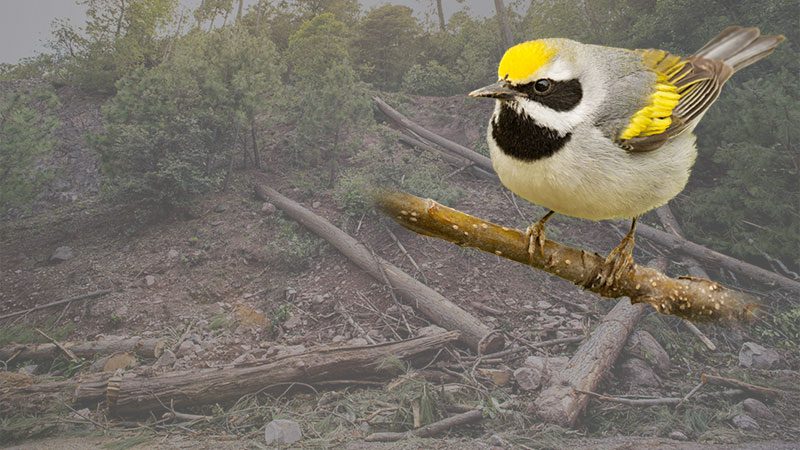In Mexico and Central America, cocaine traffickers seek out remote forests for their operations—eating away at the habitat of a dozen Neotropical migratory bird species.
September 25, 2024

From the Autumn 2024 issue of Living Bird magazine. Subscribe now.
Central America contains just 0.1% of the Earth’s land mass, yet it harbors at least 7% of the Earth’s biodiversity—meaning the region has outsized importance when it comes to protecting birds and other wildlife. It’s also an area through which billions of dollars in cocaine is ferried around the world each year.
New research shows that, above and beyond the tragic human consequences of the illegal drug trade, cocaine trafficking in Central America is causing substantial environmental damage. The study—conducted by multiple universities plus the U.S. Fish and Wildlife Service, and published in June in the journal Nature Sustainability—analyzed landscape changes in Central America following major drug enforcement actions and compared them with concentrations of migratory birds wintering in those same areas. The results highlight the surprising connections between drug trafficking, enforcement measures, and biodiversity.
On the Run, and Clearing Land as They Go
“When drug traffickers are pushed into remote forested areas, they clear land to create landing strips, roads, and cattle pastures,” says Amanda Rodewald, senior director of the Center for Avian Population Studies at the Cornell Lab of Ornithology and lead author of the study. “Those activities—and the counterdrug strategies that contribute to them—can deforest landscapes and threaten species.”






Rodewald says that often after a large seizure of drugs in one area, the illegal operations will move into places that are even harder to reach, pushing narco-deforestation into ever more remote areas. The study authors identified areas at increased risk in the ever-shifting geography of cocaine-trafficking activities, and then used eBird Status and Trends abundance data to find that two-thirds of those areas are also important to forest birds—including 67 species of migratory birds that breed in the U.S. and Canada and migrate to Central America.
One of the birds most impacted is the federally endangered Golden-cheeked Warbler, a species that breeds only in Texas and spends the rest of the year in a forested landscapes from southern Mexico to Nicaragua. The study found that during the nonbreeding season, 90% of the global population of Golden-cheeked Warblers relies on lands deemed vulnerable to narco-deforestation. Eleven other migratory birds—including Golden-winged Warbler, Philadelphia Vireo, Chestnut-sided Warbler, Yellow-bellied Flycatcher, and Baltimore Oriole—stood out as species with significant global populations (50% or more) migrating to lands predicted to be at increased risk from narco-trafficking.


Traffickers “Have Nearly Unlimited Money and Power in the Region”
Nicholas Magliocca, a study coauthor and geographer at the University of Alabama who specializes in human-environmental interactions, says this research builds on his previous work analyzing land-use conditions and narco-trafficker decisions based on perceived risk and profit. He says the traffickers usually keep their profitable operations going by any means necessary, even after seizures and arrests.
“U.S. drug policy in Central America focuses on the supply side of the equation …. After 40 years that approach has not worked,” says Magliocca. “This research [shows] the harms caused by drug trafficking and the way we currently go about fighting it. You have to do more than reactively chase after the drug traffickers who have nearly unlimited money and power in the region. No question it’s a complex, fluid, and dangerous situation.”
The areas of increased risk for cocaine trafficking in Central America tend to be large forest tracts inhabited by a high proportion of Indigenous people. Rodewald says that engaging with these Indigenous communities could be one way to begin turning the tide on narco-deforestation.
“Incorporating measures that build capacity in local communities and governments to monitor and protect their forests, grow alternate forms of income, and resolve unclear land tenure would go a long way,” Rodewald said. “This study is a reminder that we can’t address social problems in a vacuum, because they can have unintended environmental consequences that undermine conservation.”

